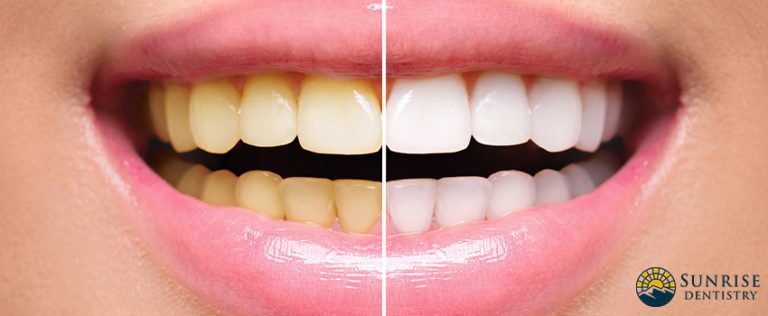It’s normal for kids to feel a bit nervous about going to the dentist. However, this anxiety may make them fussy and prevent them from getting the treatment they need. They will need to stay still for certain procedures, or they may fear the tools their dentist is going to use.
Sedation dentistry for kids may help calm them down and give them a better dental experience. You may feel concerned about using sedation on your child and its safety. Learning about pediatric sedation dentistry and how you can help your child prepare and recover from getting sedated may help ease your worries.
Sedation Dentistry: What Is It?
Dentists may sometimes need mild sedatives to help their patients feel more relaxed and less anxious while receiving dental care. It’s often used when they need to perform multiple consecutive procedures, there are safety concerns, and if a child has a strong gag reflex. This way, your child will feel more at ease during their dental procedure and turn it into a more positive experience.
However, it should be noted that the sedatives may calm them down but won’t keep your child from feeling pain or discomfort from their dental procedures. The dentist will inject or apply anesthesia to the area to be treated to make it numb, preventing your child from feeling any pain throughout the procedure.
Sedation Dentistry for Kids: Types
Based on your child’s health and the procedure they will have to undergo, their dentist may offer different sedation options, which include:
Nitrous Oxide
Also known as “laughing gas,” nitrous oxide is the most gentle type of sedation dentists use. Children inhale nitrous oxide with a bit of oxygen, making them feel more relaxed. It won’t make your child fall asleep but they may feel lightheaded or silly, while others say they feel weird.
Mild Sedation
Mild sedation is more commonly used on older children and adults. Your child will be calm but alert. Sometimes they’re capable of performing the tasks their dentist or surgeon asks them to do. However, they may also forget some of the details of the procedure when the sedative wears out.
Moderate Sedation
Moderate sedation is more suitable for older children and adults; it’s not suitable for fearful and younger children. Putting a child under moderate sedation may make them feel more tired but still capable of completing the tasks their dentist or surgeon needs them to do.
Moderate sedation allows patients to breathe on their own and recover faster, but they may also forget about the procedure.
Deep Sedation
Deep sedation is when your child receives liquid sedation dentistry to help your child fall asleep. A qualified professional will monitor your child’s heartbeat and blood pressure until they are awake and determine your child’s readiness to go home. Your child may make some sounds and move around under deep sedation, but they won’t be able to breathe on their own.
General Anesthesia
General anesthesia will cause your child to fall asleep and keep them from feeling any pain. It is only administered in a fully equipped dentist’s office, hospital, or ambulatory surgical center. An anesthesia professional with special training will administer the general anesthesia and monitor your child while a dentist or oral surgeon performs the procedure.
Sedation Dentistry For Kids: Is It Safe?
The American Academy of Pediatric Dentistry (AAPD) and the American Academy of Pediatrics (AAP) has revised their sedation dentistry guidelines. They require two people to be present who can provide advanced life support when sedation dentistry is performed. One is the dentist or oral surgeon who will perform the procedure. The other one will act as an independent observer; they may be an anesthesiologist, certified registered anesthetist, oral surgeon, dental anesthesiologist, or physician anesthesiologist.
With all these guidelines in place, it’s safe to say that your kid is in good hands.
Sedation Dentistry For Kids: Preparing Your Child
Your child’s age will determine the instructions you’ll need to follow.
For infants younger than 12 months:
- Formula-fed babies should be fed up to six hours before their arrival.
- Breastfeeding babies may breastfeed up to four hours before arriving at the clinic.
All children
- Don’t allow your child to eat solid foods or non-clear liquids past midnight before their appointment. Some foods and drinks they can’t consume include milk, juices with pulp, chewing gum, chocolate, and candy.
- Your child can drink clear liquids up to two hours before you arrive at the dental office for your appointment.
- Give your child their medications if needed unless their dentist, doctor, or nurse tells you not to.
Comforting Your Child During Sedation
You may find it difficult to watch your child get sedated. Be strong; children are sensitive to their parents’ presence, which can help calm them down and stay positive.
You can help your child feel better while they receive sedation by:
- Talking, singing, or whispering to them to reassure your child that you’re there with them
- Allowing them to hold their favorite toy or comfort object
- Showing them your love by touching their hair or holding their hand
Children’s Sedation Dentistry: What To Expect
You’ll be escorted back to the treatment room once the procedure is over, but don’t expect that your child is already alert. Some children take longer recovering from getting sedated.
Every child will react differently to sedation. Some get upset, fussy, irritable, sick, or confused after sedation. These are normal reactions that will go away as soon as the sedation medication wears off.
Some child sedation dentistry side effects your child may experience upon discharge include feeling groggy, dizzy, or nauseated. It’s best to have them take the day off and let them rest.
Pediatric Sedation Dentistry: Aftercare
Caring for your child after a sedated tooth extraction or other dental procedure will help them recover faster and add to a positive dental experience.
- Your child may feel numbness in their throat, nose, and mouth for as long as two hours, and their gums and mouth may feel tender for several days, depending on the type of procedure they had.
- Watch what your child consumes in the next two hours. They may eat soft foods, but make sure they don’t bite the inside of their mouth or tongue.
- Keep your child at home and let them relax for the remainder of the day.
- Your dentist will notify you about your child’s next visit.
Key Takeaway
Children may need sedation dentistry to help them feel calm or if they feel anxious, have a strong gag reflex, and more. To better address children’s needs, dentists offer different levels and types of sedation, and they follow strict guidelines to ensure the child’s safety during sedation. You must also properly prepare your child to receive sedation and help them recover.
Help your child have a healthier smile with Sunrise Dentistry.
Our dentists in Durango, CO, provide preventive and general dentistry services that help kids and adults achieve beautiful smiles and healthier teeth. They also take a holistic approach to oral health, providing natural treatments and instructions that enrich overall health. Call us today for a more holistic dental experience.





